Big pet lizards are not only impressive but also very entertaining. For some, the largest pet lizards are the most attractive as pets. If you’re one of these people who prefers large pet lizards, then this post is for you!
When looking for a pet lizard, you may have seen that most of the options available are rather small. While small does boast a lot of advantages, large pet lizards are generally more impressive, intelligent and easier to interact with. This blog post lists the largest pet lizards that you can legally get (disclaimer: Always check the laws in your own country. This is not a substitute to legal advice!), along with some general information on each one.
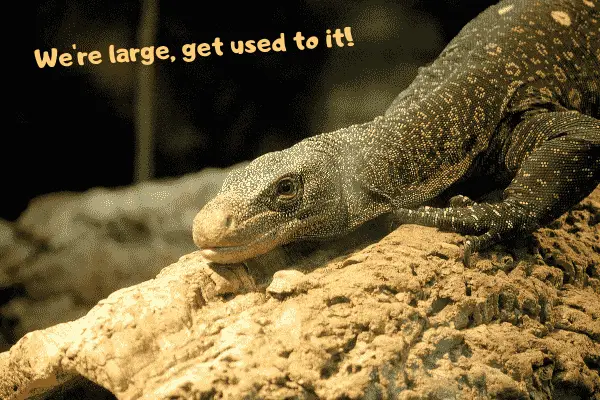
Note: Looking for the biggest pet lizard you can find may sound like a good idea, but beware; large pet lizards generally have a large bite and are very expensive to buy and maintain. It’s for these reasons why we haven’t only included the largest pet lizards, but also some of the biggest options per species.
Is a large pet reptile for me?
Probably not! The main problem with the huge pet reptiles on this list is their size…
With this size comes a vast array of problems, including the fact that they can do some serious damage to you, that they cost a lot of money and that they require a lot of space. If you aren’t an experienced reptile keeper with a lot of room (sometimes a whole one!) and a budget to match, these are probably not for you.
The first animal on this list is somewhat accessible to less experienced reptile keepers with the room and budget, but there isn’t one lizard on here that we would recommend as a starter-lizard. Please keep this in mind and always do your research before purchasing a pet.
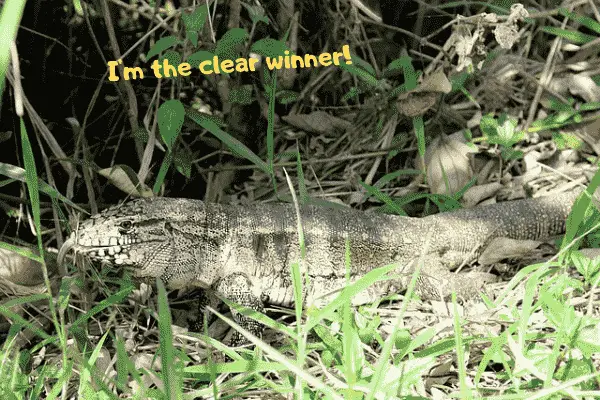
Table of Contents
Argentine tegu
Size: Large (3-4.5 feet)
Care: Doable with proper resources and research
Hardiness: Hardy
The argentine tegu is a huge lizard that’s actually relatively easy to care for compared to the others on this list.
However, if you get bitten by an Argentine tegu, the experience will not be pleasant. They are a very powerful lizard that has quite the bite force. Luckily, out of all the lizards on this list, they are the least likely to bite.
Argentine tegus tend to have a calm temperament and can get quite attached to their owners. They can get up to 4.5 feet long (females up to about 3 feet) and are surprisingly good pets. If there was one giant lizard we would recommend as a pet, then the Argentine tegu would be it!
Argentine tegus are omnivores and as they get older, they start to eat more fruits and vegetables. Due to their size, these lizards eat a lot, so expect a large food budget.
Their cage size is reasonable compared to the other reptiles on this list, however, these large pet lizards still need a big enclosure. This enclosure needs to be upwards of 8 by 4 foot when they are adults and will require some DIY work on your part.
Tegus love digging and are strong too, so you need to be careful when building their enclosure.
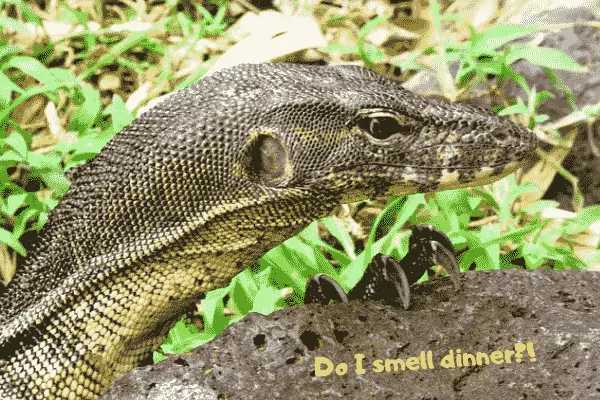
Water monitor
Size: Very large (3-6 feet. Bulky and heavy.)
Care: Difficult, expensive and painful
Hardiness: Relatively hardy if given the right conditions
The second large pet lizard on this list is the water monitor. This is one of the largest pet lizards you can get and, just like all the other lizards on this list, are terrible pets.
Well, they aren’t actually pretty good pets if you have the time and resources, but they are not for your average Joe. These monitors are very intelligent and require a humongous enclosure. They also need a lot of maintenance making them difficult to care for for people with “normal” lives and jobs.
With proper care and training, these monitors are a great companion and a beautiful animal to spend your time watching and interacting with.
That all being said, they are very expensive pets to keep and require an enclosure that’s often bigger than one room of your house. Heating and lighting are expensive, and feeding is a pain due to their sheer size.
Also, expect a lot of scratches and cuts in the first few years. Even though these lizards have relatively good temperaments when compared to the others on this list once they’re used to interacting with people, this is still a powerful lizard that’s capable of inflicting serious damage if you’re not careful.
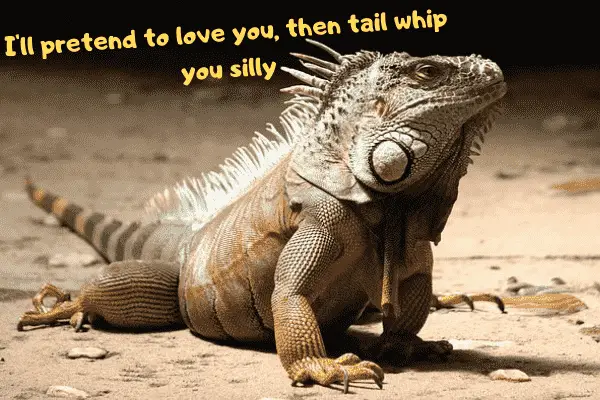
Green iguana
Size: Large (5-7 feet. Not as bulky as the water monitor.)
Care: Doable with proper conditions but painful and expensive in most cases
Hardiness: Relatively hardy
Green iguanas are the next species of big pet lizards on this list. Care-wise, these are one of the easiest pet lizards to keep alive and healthy. However, they have temperament issues that make for them to be just horrible pets in most cases.
If you love getting whipped and being left with large gashes due to this, then they might just be the best pet reptile for you. However, we’re going to go ahead and assume that this isn’t something that tickles your fancy.
Along with the regular and painful tail whips, you can also enjoy hard bites and scratches, especially from male iguanas. Their temperament is very unpredictable and can swing from great to extremely moody randomly.
They’re very expensive when it comes to feeding and lighting, and do need a good-sized enclosure too. These Iguanas are far too cheap to buy and far too readily available. This results in a lot of green iguanas in reptile rescues and this availability isn’t a good indication of the costs and difficulty that comes along with these pet lizards.
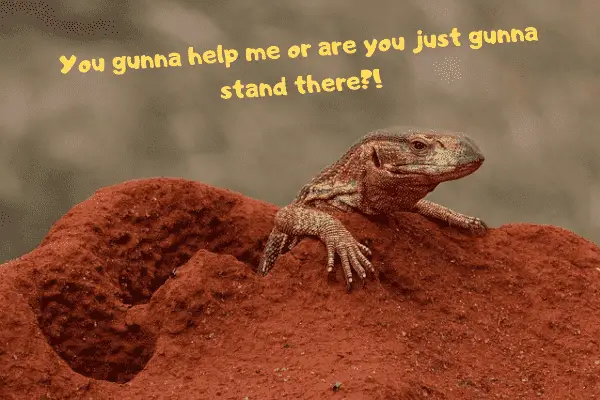
Savannah monitor
Size: Large (3.5-5 feet)
Care: Difficult and expensive
Hardiness: Relatively hardy if given the right conditions
Savannah monitors are another extremely beautiful big pet lizard. Originally from Africa, these monitors need a lot of heat and a surprisingly large enclosure.
They are slightly smaller than some of the other monitors on this list, but are far from small and still need a surprising amount of room.
Their temperament when fully grown is good if trained and handled properly when they are little. However, a grumpy stage with a lot of biting and scratching is not uncommon. These scratches and bites can cause serious damage, especially when they are older.
As with all monitors, these pet lizards are very intelligent and are great to interact with. They aren’t very hardy and their care is fairly difficult to master.
The Savannah monitor is a pet for experienced reptile keepers with the money to provide them with proper care. Unfortunately, these lizards are fairly inexpensive to buy, and most of these are imported and not captive-bred. Not only is this bad for the wild populations, but the imported monitors are often a lot less healthy.
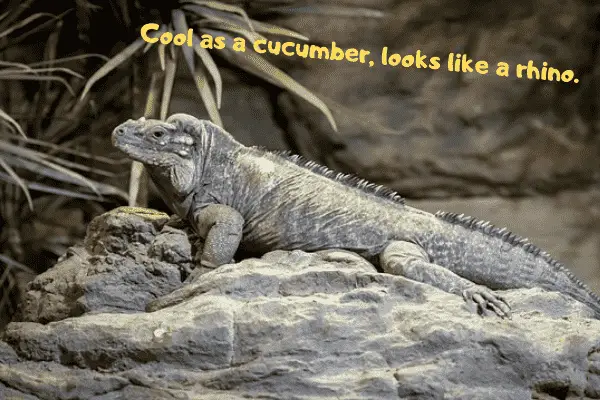
Rhino iguana
Size: Large (2-4 feet)
Care: Doable with proper research and resources, but expensive and can be painful at times
Hardiness: Relatively hardy
The rhino iguana is the green iguanas’ better-behaved cousin. They still have a powerful bite and large claws, but are generally considered as a much more appropriate pet then the green iguana.
This huge pet lizard is actually a vegetarian, which is perfect for people who don’t like to feed other animals to their pets. However, depending on where you live, this makes them even more expensive to feed than the other animals on this list.
If cared for properly, these iguanas are pretty hardy and easy to keep alive. They also live for a long time so this hardiness certainly comes in handy.
As with most iguanas, they love to sneeze all over the place. If you have a custom enclosure created (you have no other choice due to the size), and it has glass sides, you can expect to clean them daily if you want any kind of visibility!
All-in-all, they are very expensive to buy and maintain and need a lot of space. Not a great pet but one of the better large pet lizards available.
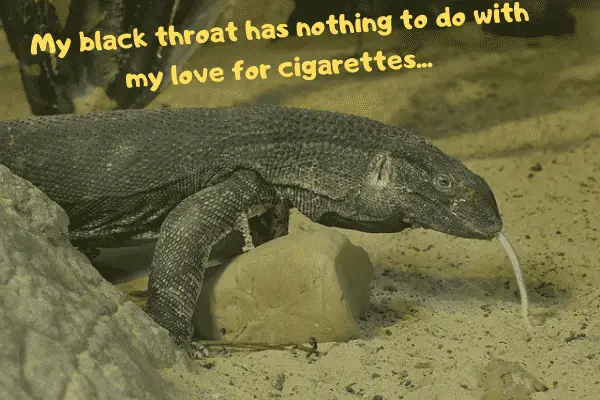
Black throat monitor
Size: Large (Up to 7 feet)
Care: Very expensive but doable with proper resources, experience and research
Hardiness: Relatively hardy
Black throat monitors are one of the better large pet reptiles on this list. That being said, it’s still a giant pet lizard, so it still comes with a lot of disadvantages. They have a good personality, but they still have sharp claws and a very strong bite.
They need a large enclosure but don’t need a pond which makes their housing slightly easier. That being said, they love to dig so need an enclosure that’s properly sealed off to prevent escapes.
Lighting and feeding are also very expensive, and the animal itself is expensive too. They aren’t all too easy to find though, but you can find some breeders online.
Their care isn’t all too bad and they’re fairly hardy lizards. Apart from the fact their care is ridiculously expensive, and they need a crazy amount of space, they aren’t too difficult to keep alive if provided with the right husbandry.
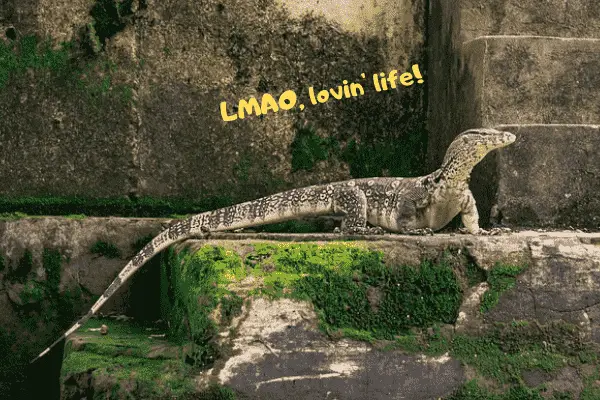
Nile monitor
Size: Large (Up to 6 feet)
Care: Difficult, expensive and probably painful
Hardiness: Relatively hardy
The Nile monitor is another beautiful large pet lizard, but they don’t make great pets. These monitors are very active, cleaver and are heavily armed for a pet lizard. They have large claws and a crushing bite that will do serious damage.
It’s difficult to get these monitors used to you, and they have a tendency to be aggressive in certain scenarios. If you do get them used to handling when they are small and don’t stop, then, with some minor flesh wounds, you may end up with a good pet that’s relaxed when it comes to interactions.
These monitors, just like the rest of the entries on this list, are very expensive to maintain. They not only need a huge enclosure, but they also eat a lot. They love climbing, so this means they also need height in their enclosure as well as a large floor area.
They will also need a fairly large pond area in their enclosure, which means their enclosure will take up even more space than normal. This comes with more complications, as the pond will need filtration and heating too.
All of that being said, Nile monitors are one of the most interesting and beautiful big pet lizards you can get as pets. They certainly aren’t recommended unless you have the experience, space, funds and dedication to take care of them though.
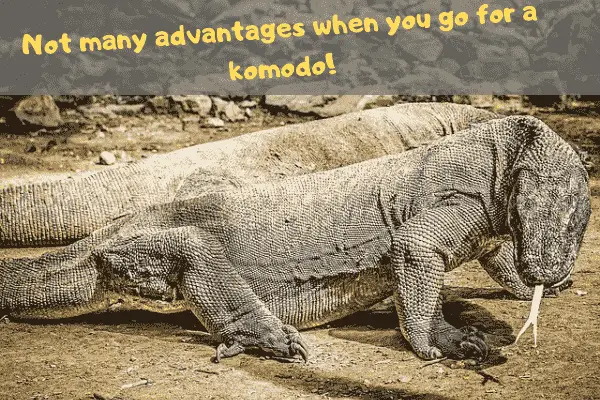
Advantages of large pet lizards
- Smart
The large pet lizards on this list are smart and this makes them great pets. This also makes them much easier and more rewarding to interact with
- Large
Being large, you don’t have to worry about harming them during handling. Their size also makes them very impressive animals to look at.
- Unique pets
Since they are difficult to find, they are very unique animals to have as pets.
Disadvantages of large pet lizards
- Dangerous
Even though they aren’t deadly, the animals on this list are certainly dangerous. If you get bitten or scratched by these big lizards, they can do some serious damage.
- Very expensive
Due to their size, they are very expensive to care for. They need a lot of space, usually have difficult care requirements and eat a lot.
- Take up a lot of room
Most people simply won’t have the space to care for these large lizards.
- Difficult care requirements
If you’re not an experienced reptile keeper, it’s best to not even try and take on the husbandry of these humongous animals.
- Hard to find
These large pet lizards aren’t easy to find and there aren’t a lot of people breeding them, and for good reason!
Conclusion
If you’re wondering whether or not to get a large pet lizard, you probably shouldn’t. They require a lot of care and attention and can even be dangerous in some cases. On top of this you’ll be spending a heck of a lot of money on their care for decades to come.
Nevertheless, if you can afford it and do have the experience and knowledge to care for these great beasts, they’re certainly a fun addition to your household. If there’s anything you feel we’ve missed, or you have any questions, please feel free to reach out to us in the comments or by shooting us an email.
